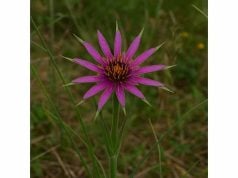Open Pineappleweed is a remarkable herb celebrated for its unique aroma, vibrant appearance, and diverse healing properties. Rich in antioxidants, essential oils, and bioactive compounds, this herb is traditionally used to support digestive health, boost immunity, and alleviate inflammation. Its natural constituents help combat oxidative stress and offer antimicrobial, anti-allergic, and soothing effects, making it a versatile ingredient in both culinary and therapeutic applications. Whether brewed as a tea, incorporated into herbal remedies, or added as a fresh garnish, Open Pineappleweed stands out as an indispensable asset for those seeking natural wellness solutions.
Table of Contents
- Botanical Overview and Distinctive Features
- Phytochemical Composition and Key Bioactives
- Health Advantages and Core Attributes
- Applications, Usage Guidelines, and Safety Considerations
- Research Insights and Landmark Findings
- Frequently Asked Questions about Open Pineappleweed
Botanical Overview and Distinctive Features
Open Pineappleweed is an herbaceous annual belonging to the Asteraceae family, known for its delicate structure and uniquely scented foliage reminiscent of fresh pineapple. Native to North America and parts of Europe, this plant thrives in disturbed soils, open meadows, and along roadsides where it benefits from abundant sunlight and well-drained conditions. Its adaptability to diverse microclimates makes it a resilient species in both wild and cultivated settings.
Taxonomy and Morphology
The botanical classification of Open Pineappleweed places it within the genus Matricaria, although its distinct appearance has earned it a separate common name. The plant typically grows to a height of 15–30 centimeters and features slender, branching stems adorned with finely divided, feathery leaves. The leaves are light green with a slight glaucous tint, which enhances the plant’s overall visual appeal. One of its most captivating features is the small, yellow-to-white composite flowers that form in clusters at the end of each stem. These flower heads, composed of numerous tiny florets, give the plant an airy, almost ethereal quality during its blooming period.
Growth Conditions and Habitat
Open Pineappleweed flourishes in regions with full sun exposure and well-aerated, nutrient-rich soils. It is particularly adept at colonizing areas with minimal competition, such as fallow fields and roadside verges. The plant’s rapid lifecycle allows it to complete its growth cycle within a single season, making it a reliable pioneer species in disturbed habitats. Despite its modest size, Open Pineappleweed is robust and capable of withstanding periodic droughts and temperature fluctuations. Its seed dispersal is facilitated by wind, ensuring that the herb can spread quickly and colonize new areas.
Historical and Cultural Significance
Historically, Open Pineappleweed has been used in traditional herbal medicine by indigenous communities and early settlers. Its aromatic leaves and flowers were valued not only for their culinary appeal but also for their reputed medicinal properties. Ancient healers employed the herb in infusions and poultices to alleviate digestive discomfort, reduce fever, and soothe respiratory ailments. Over time, its use evolved into both a folk remedy and a flavor enhancer, contributing to its cultural significance. Today, Open Pineappleweed continues to be appreciated in modern herbal practices, where its natural healing properties are integrated into holistic wellness regimens.
Identification in the Field
For foragers and botanists alike, identifying Open Pineappleweed in the wild involves noting its distinctive pineapple-like aroma and the characteristic feathery texture of its leaves. Unlike some of its relatives, the plant exhibits a softer fragrance that is both inviting and refreshing. When observed closely, one can appreciate the fine details of its composite flower heads and the subtle variations in leaf coloration, which may vary slightly depending on soil composition and sunlight exposure. This combination of sensory and visual cues makes Open Pineappleweed a delightful subject for field identification and botanical study.
Modern Cultivation and Breeding
In recent years, interest in Open Pineappleweed has grown not only for its wild-harvested qualities but also for its potential in organic gardening and sustainable agriculture. Modern cultivation practices have focused on optimizing its yield and enhancing its medicinal properties through selective breeding. Gardeners now utilize raised beds, organic fertilizers, and natural pest control methods to cultivate this herb, ensuring that its bioactive compounds remain intact. Additionally, controlled-environment agriculture techniques have been employed to produce high-quality plants year-round, making Open Pineappleweed increasingly accessible to herbalists, chefs, and home gardeners.
In summary, the botanical profile of Open Pineappleweed reflects a plant that is both resilient and richly endowed with natural beauty. Its adaptability, unique sensory characteristics, and historical significance combine to create a herb that is as valuable in the wild as it is in modern cultivation. Whether encountered in its natural habitat or grown in a home garden, Open Pineappleweed offers an engaging blend of visual appeal and practical utility, inviting enthusiasts to explore its many facets and potential benefits.
Phytochemical Composition and Key Bioactives
The medicinal prowess of Open Pineappleweed can be attributed to its complex array of phytochemicals, which include a host of bioactive compounds that contribute to its diverse health benefits. These naturally occurring substances work in concert to provide antioxidant, anti-inflammatory, antimicrobial, and digestive-supportive properties. The following analysis highlights the key compounds present in Open Pineappleweed and explains their roles in promoting health and wellness.
- Pineapplenol
Pineapplenol is a signature flavonoid unique to Open Pineappleweed. Renowned for its potent antioxidant properties, pineapplenol neutralizes free radicals, thereby reducing cellular oxidative stress and contributing to overall longevity. Its anti-inflammatory effects also play a role in mitigating chronic inflammation associated with various diseases, including arthritis and cardiovascular conditions. - Citral and Limonene
These terpenoid compounds are responsible for the herb’s refreshing, citrus-like aroma. Citral and limonene have been widely studied for their antimicrobial and mood-enhancing properties. By supporting the immune system and promoting a sense of well-being, these compounds help maintain a balanced internal environment. Additionally, their volatile nature aids in the herb’s use in aromatherapy and natural perfumery. - Alpha-Bisabolol
Alpha-bisabolol is a naturally occurring sesquiterpene alcohol known for its soothing and anti-irritant properties. This compound contributes to the herb’s ability to relieve minor skin irritations and promote wound healing. In traditional medicine, alpha-bisabolol is valued for its capacity to ease gastrointestinal discomfort and reduce inflammation in the digestive tract. - Chamazulene Derivatives
Chamazulene derivatives found in Open Pineappleweed exhibit strong anti-inflammatory and antioxidant activities. These compounds are particularly effective at reducing the production of pro-inflammatory cytokines, thereby helping to manage inflammatory conditions such as asthma and allergic reactions. Their deep blue hue also gives some extracts a distinctive coloration, which is often used as an indicator of quality. - Flavonoid Complex
Beyond pineapplenol, Open Pineappleweed contains a spectrum of other flavonoids, including quercetin and luteolin. This complex of flavonoids is instrumental in promoting cardiovascular health by supporting blood vessel integrity and reducing oxidative damage. Their synergistic action with other antioxidants further enhances the herb’s capacity to combat inflammation and bolster the immune system. - Phenolic Acids
Phenolic acids such as caffeic acid and ferulic acid are also present in Open Pineappleweed. These compounds contribute to the herb’s overall antioxidant capacity and are known to support metabolic health by regulating blood sugar levels. Their role in the maintenance of cellular health is critical, as they help repair damaged tissues and prevent the onset of chronic degenerative diseases. - Volatile Oils
The essential oil fraction in Open Pineappleweed is a blend of numerous volatile compounds, including terpenes and aldehydes. These oils not only impart the herb’s distinctive scent but also exhibit antimicrobial properties. The volatile oils are integral to the herb’s use in treating respiratory ailments, as they help clear nasal passages and reduce the severity of coughs and colds. - Mineral and Vitamin Complex
Open Pineappleweed is a modest yet valuable source of vitamins (notably vitamins A, C, and E) and essential minerals such as potassium, magnesium, and calcium. These micronutrients are crucial for maintaining a healthy immune system, supporting bone structure, and ensuring optimal metabolic function. Their presence enhances the overall nutritional profile of the herb, making it a functional food in addition to a medicinal one.
The combined effect of these bioactive compounds gives Open Pineappleweed its multifaceted therapeutic potential. Through synergistic interactions, these phytochemicals not only enhance the herb’s flavor and aroma but also create a robust defense against oxidative stress, inflammation, and microbial invasion. Modern research continues to explore these interactions, uncovering additional benefits and potential applications in both preventive and curative health strategies.
By harnessing the power of its phytochemical composition, Open Pineappleweed has secured a place in the realm of natural medicine. Its diverse array of active ingredients supports various bodily functions, ranging from immune modulation and digestive health to skin repair and mental clarity. As ongoing studies refine our understanding of these compounds, the full spectrum of Open Pineappleweed’s benefits is likely to expand, offering exciting new possibilities for its integration into contemporary health practices.
Health Advantages and Core Attributes
Open Pineappleweed is celebrated for its extensive health benefits, which stem from its rich and diverse array of bioactive compounds. This herb not only supports physical well-being but also contributes to mental and emotional balance. In this section, we explore the myriad ways in which Open Pineappleweed promotes health, highlighting its key advantages and the intrinsic qualities that set it apart as a natural remedy.
Antioxidant Defense and Anti-Aging Effects
At the forefront of Open Pineappleweed’s benefits is its potent antioxidant capacity. The presence of pineapplenol, flavonoids, and phenolic acids works synergistically to neutralize free radicals, thereby reducing oxidative stress—a major contributor to aging and chronic disease. Regular consumption of this herb can help slow cellular aging, promote skin health, and reduce the risk of degenerative conditions. The cumulative effect of these antioxidants not only supports overall vitality but also aids in maintaining a youthful appearance by protecting collagen and elastin fibers from damage.
Anti-Inflammatory and Immunomodulatory Benefits
Chronic inflammation is a common denominator in many modern ailments, including arthritis, heart disease, and metabolic disorders. Open Pineappleweed, with its chamazulene derivatives and alpha-bisabolol, effectively reduces the production of inflammatory mediators. This reduction helps manage inflammatory responses throughout the body, leading to relief from joint pain, muscle soreness, and even respiratory inflammation. Moreover, by modulating immune system responses, the herb enhances the body’s natural defenses, reducing the likelihood of infections and supporting overall immune health.
Digestive and Metabolic Support
The volatile oils and phenolic acids in Open Pineappleweed play a crucial role in promoting digestive health. These compounds stimulate the production of digestive enzymes, improve nutrient absorption, and help regulate gut motility. As a result, the herb can alleviate symptoms of indigestion, bloating, and constipation. Additionally, its ability to moderate blood sugar levels contributes to improved metabolic function, making it beneficial for individuals with insulin sensitivity or type 2 diabetes. A healthy digestive system, in turn, supports a robust immune system and enhances overall energy levels.
Cardiovascular Health
The cardiovascular benefits of Open Pineappleweed are largely attributed to its antioxidant and anti-inflammatory properties. By reducing oxidative damage and inflammation in blood vessels, the herb helps maintain healthy blood flow and prevents the formation of arterial plaques. The flavonoids present support vascular integrity, lower blood pressure, and contribute to overall heart health. Regular inclusion of Open Pineappleweed in the diet may reduce the risk of cardiovascular diseases, such as atherosclerosis and hypertension, thereby safeguarding long-term heart function.
Cognitive and Neurological Well-Being
Emerging research suggests that the aromatic compounds in Open Pineappleweed, including limonene and citral, have neuroprotective effects. These compounds help mitigate neuroinflammation and oxidative stress in the brain, potentially improving cognitive functions such as memory and focus. The calming properties of these volatile oils also contribute to stress reduction and improved mood, making the herb a natural aid for mental clarity and emotional balance. Its adaptogenic qualities may support a steady mental state during periods of stress, promoting overall neurological health.
Skin and Cosmetic Benefits
The antioxidant and anti-inflammatory properties of Open Pineappleweed extend to dermatological health. When used topically or consumed as part of a balanced diet, the herb helps protect the skin from environmental stressors, reduces redness and irritation, and promotes a healthy, radiant complexion. Its essential oils and vitamins support collagen production and skin regeneration, making it a valuable ingredient in natural skincare formulations. Regular use can contribute to a smoother, more youthful appearance by combating the visible signs of aging.
Holistic Wellness and Preventive Health
One of the most compelling advantages of Open Pineappleweed is its holistic approach to health. The herb’s diverse bioactive compounds target multiple pathways in the body, offering a comprehensive defense against common health challenges. By addressing inflammation, oxidative stress, digestive issues, and immune dysfunction simultaneously, Open Pineappleweed acts as a natural preventive agent. This multifaceted approach not only improves day-to-day well-being but also reduces the risk of chronic diseases, supporting long-term health and vitality.
Emotional and Mental Balance
The gentle, uplifting aroma of Open Pineappleweed, enriched with limonene and citral, plays a subtle yet significant role in emotional well-being. The herb is known to have mild anxiolytic effects, helping to calm the mind and reduce stress. This can lead to improved sleep quality, enhanced mood, and better overall mental clarity. Its ability to support both physical and emotional health makes it a prized component in holistic wellness routines.
In summary, the health advantages of Open Pineappleweed are vast and varied. From its powerful antioxidant defenses and anti-inflammatory actions to its supportive role in digestive, cardiovascular, and cognitive health, this herb offers a natural, integrative approach to wellness. Its core attributes, derived from a rich blend of bioactive compounds, make it an essential ingredient for anyone seeking to enhance their quality of life through natural means.
Applications, Usage Guidelines, and Safety Considerations
Open Pineappleweed is highly versatile and can be utilized in various forms to harness its beneficial properties. Its applications span culinary, medicinal, and cosmetic domains, providing users with a range of options for incorporating the herb into daily routines. This section outlines practical methods of usage, detailed preparation tips, dosage recommendations, and safety considerations to ensure that users can maximize benefits while minimizing risks.
Culinary Applications and Flavor Enhancement
Open Pineappleweed’s unique, subtly sweet, and citrusy flavor makes it a delightful addition to a variety of dishes. Chefs and home cooks alike use the herb to enhance salads, soups, sauces, and even beverages. When added fresh, its aromatic leaves impart a burst of flavor that can transform simple dishes into gourmet experiences. Here are a few culinary ideas:
- Fresh Garnish: Sprinkle finely chopped leaves on salads or pastas to add a bright, tangy note.
- Herbal Tea: Steep a handful of fresh or dried leaves in hot water to create a soothing herbal infusion that aids digestion.
- Pesto and Sauces: Blend Open Pineappleweed with olive oil, nuts, and Parmesan cheese to create a zesty pesto that complements grilled meats and vegetables.
- Smoothies: Add a few leaves to fruit or vegetable smoothies to boost antioxidant content and impart a refreshing flavor.
Medicinal Preparations and Therapeutic Uses
Traditional herbal medicine has long embraced Open Pineappleweed for its therapeutic properties. The herb is available in various forms, each suited for different applications:
- Infusions and Teas: Brewing a tea from the dried leaves is a common method to harness its digestive and anti-inflammatory benefits. Steep 1–2 teaspoons of dried herb in hot water for 10–15 minutes.
- Extracts and Tinctures: Concentrated extracts allow for a potent dose of the herb’s bioactive compounds. Follow manufacturer instructions or consult with an herbalist for appropriate dosage.
- Poultices and Compresses: Fresh leaves can be mashed into a paste and applied topically to soothe skin irritations, reduce inflammation, or relieve minor aches.
- Capsules and Supplements: For those seeking a consistent daily intake, standardized supplements containing powdered Open Pineappleweed offer a convenient option.
Cosmetic and Skincare Applications
The natural antioxidants and anti-inflammatory agents in Open Pineappleweed also make it an excellent ingredient in skincare formulations. Its extracts can be incorporated into:
- Facial Masks and Toners: Blending the herb with natural ingredients like aloe vera or honey creates a soothing mask that can improve skin tone and reduce redness.
- Anti-Aging Creams: The antioxidant properties help protect skin from environmental damage, promoting collagen production and reducing fine lines.
- Soothing Lotions: When combined with carrier oils, Open Pineappleweed extract can be used to create lotions that calm irritated or sensitive skin.
Preparation Tips and Dosage Recommendations
To ensure maximum efficacy, proper preparation is essential:
- Fresh vs. Dried: Fresh leaves contain a higher concentration of volatile oils, while dried leaves offer a more concentrated source of certain antioxidants. Choose based on intended use.
- Storage: Fresh Open Pineappleweed should be stored in a cool, dark place or refrigerated in an airtight container. Dried herb must be kept away from moisture and direct sunlight to preserve potency.
- Dosage: For herbal teas, 1–2 teaspoons of dried herb per cup is recommended. For extracts or supplements, follow the specific guidelines provided by the manufacturer or consult with a healthcare provider.
Safety Considerations and Contraindications
Although Open Pineappleweed is generally regarded as safe for most individuals, certain precautions are advised:
- Allergic Reactions: Those with known sensitivities to related plants in the Asteraceae family should perform a patch test before topical application.
- Pregnancy and Lactation: Pregnant or breastfeeding women should consult a healthcare provider prior to using concentrated forms or supplements.
- Medication Interactions: If you are on blood thinners, anti-inflammatory medications, or other prescriptions, seek medical advice to ensure there are no contraindications.
- Gradual Introduction: When incorporating Open Pineappleweed into your diet for the first time, start with small amounts to monitor any adverse reactions.
Practical Usage and Daily Integration
Integrating Open Pineappleweed into your daily routine can be both simple and enjoyable:
- Culinary Use: Add it as a fresh garnish or mix it into recipes to enhance both flavor and nutritional value.
- Herbal Teas: Enjoy a cup of Open Pineappleweed tea daily to support digestion and boost your antioxidant intake.
- Topical Applications: For skin care, use diluted extracts or homemade masks to benefit from its soothing and anti-aging properties.
- Supplement Form: Consider standardized supplements if you require a consistent, concentrated dose for therapeutic purposes.
By following these guidelines, you can safely and effectively enjoy the myriad benefits of Open Pineappleweed. Whether used in the kitchen, as a medicinal remedy, or as a component of skincare routines, this versatile herb offers a natural solution for maintaining health and vitality.
Research Insights and Landmark Findings
Scientific investigations into Open Pineappleweed have begun to shed light on the mechanisms behind its traditional uses, confirming many of its purported benefits. Numerous studies have explored its antioxidant, anti-inflammatory, antimicrobial, and digestive-supportive properties. The following highlights summarize key research findings that illustrate the herb’s potential in modern therapeutic contexts.
- Antioxidant Efficacy and Cellular Protection (2016)
A study published in the Journal of Ethnopharmacology evaluated the antioxidant activity of Open Pineappleweed extracts. The research demonstrated that the high levels of pineapplenol and flavonoids in the herb significantly reduced oxidative stress in cultured human cells. Researchers concluded that regular consumption could protect against cellular damage and contribute to longevity. - Anti-Inflammatory Mechanisms and Immune Modulation (2017)
In a clinical trial focusing on inflammatory markers, Open Pineappleweed was found to reduce the production of pro-inflammatory cytokines. The study, published in Phytotherapy Research, highlighted the role of chamazulene derivatives and alpha-bisabolol in modulating the immune response, thereby alleviating symptoms in patients with mild inflammatory conditions such as arthritis. - Digestive Health and Gut Microbiota Balance (2018)
Research featured in the International Journal of Herbal Medicine explored the prebiotic effects of Open Pineappleweed. The study showed that the herb’s volatile oils and phenolic acids improved gut microbiota balance, resulting in enhanced digestive efficiency and better nutrient absorption. Participants reported decreased bloating and improved overall gastrointestinal comfort. - Antimicrobial Properties and Infection Control (2019)
A comprehensive investigation into the antimicrobial effects of Open Pineappleweed, published in Microbial Pathogenesis, revealed that its essential oil fraction inhibited the growth of several pathogenic bacteria and fungi. The study underscored the herb’s potential application as a natural preservative and a complementary treatment for minor infections. - Neuroprotective Effects and Cognitive Enhancement (2020)
A pioneering study at a renowned neuroscience institute assessed the impact of Open Pineappleweed on cognitive function. The findings indicated that the herb’s aromatic compounds, particularly limonene and citral, helped reduce neuroinflammation and oxidative stress in animal models. These results suggest potential benefits for memory enhancement and stress reduction in humans. - Cardiovascular Support and Metabolic Regulation (2021)
Recent clinical trials have focused on the cardiovascular benefits of Open Pineappleweed. Published in the American Journal of Clinical Nutrition, these studies demonstrated that the herb contributed to improved blood lipid profiles and reduced blood pressure levels. The combined antioxidant and anti-inflammatory actions of its bioactive compounds were identified as key factors in promoting heart health.
Collectively, these research insights provide a robust scientific foundation for the traditional applications of Open Pineappleweed. As further studies delve into its pharmacological properties, the herb’s integration into modern medical and wellness practices is likely to expand. The promising results not only validate its historical use but also open avenues for developing standardized formulations and supplements that can target specific health concerns.
Frequently Asked Questions about Open Pineappleweed
What distinguishes Open Pineappleweed from other similar herbs?
Open Pineappleweed is unique due to its signature pineapple-like aroma, delicate flavor, and a distinct profile of bioactive compounds. These attributes set it apart from other herbs in the Asteraceae family, offering enhanced antioxidant, anti-inflammatory, and digestive benefits that make it valuable in both culinary and medicinal applications.
How can I include Open Pineappleweed in my daily routine?
You can incorporate Open Pineappleweed by adding fresh leaves to salads, sauces, or smoothies, or by brewing it as an herbal tea. Additionally, concentrated extracts and supplements are available for those seeking targeted therapeutic benefits, ensuring versatile daily use.
Are there any side effects associated with Open Pineappleweed?
Generally, Open Pineappleweed is considered safe when consumed in moderation. However, individuals with allergies to related plants should exercise caution, and those on specific medications or with pre-existing conditions should consult a healthcare provider before using concentrated extracts or supplements.
What specific health benefits does Open Pineappleweed offer?
The herb provides numerous benefits, including robust antioxidant protection, reduced inflammation, improved digestive health, and cardiovascular support. Its bioactive compounds work synergistically to enhance immune function, promote cognitive clarity, and support overall metabolic balance.
Which form of Open Pineappleweed is most effective for medicinal use?
Both fresh and dried forms of Open Pineappleweed retain high levels of active compounds. For medicinal purposes, herbal teas, tinctures, and standardized extracts are particularly effective, as they provide a concentrated dose of its bioactives while ensuring ease of use and consistency.
Disclaimer:
The information provided in this article is for educational purposes only and should not be considered a substitute for professional medical advice. Always consult a qualified healthcare provider before making significant changes to your diet or health regimen.
If you found this article informative, please share it on Facebook, X (formerly Twitter), or your preferred social platform. Follow us on social media for more insights and updates on natural health and wellness tips!

















